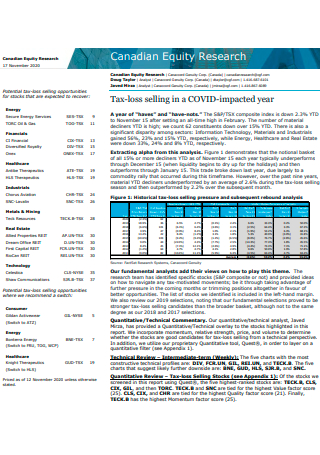Investing in the stock market can regularly feel like navigating a intricate labyrinth, with many factors affecting the value of equity. For both seasoned investors and newcomers alike, having the correct understanding can be the key to making wise choices that lead to considerable financial growth. One of the most powerful ways to gain that knowledge is through stock analysis, a dedicated approach that investigates the elements that influence a company's results and equity valuation.
Equity analysts bring a wealth of expertise and understanding to the table, allowing traders to see beyond the surface-level figures. By harnessing equity research report in evaluating financial statements, grasping market trends, and evaluating competitive positioning, these professionals help traders uncover hidden opportunities and mitigate threats. In this competitive financial landscape, learning how to take advantage of stock analysis can greatly improve your investment strategy and lead to long-term success.
Grasping Share Analysis
Stock analysis is a vital part of investing, centering on evaluating a company's stock to determine its likely performance. This method entails analyzing various aspects, including financial statements, market trends, and economic environment. By analyzing a company's earnings, assets, and liabilities, investors can assess its overall health and make informed decisions about buying, holding, or selling its stock. Stock analysts employ both numerical and descriptive methods to gain a comprehensive grasp of a company's value.
One essential aspect of equity analysis is the contrast of a company's performance against its competitors and the sector as a whole. This benchmarking allows investors to recognize proportional strengths and weaknesses, aiding them find bargain or inflated stocks. Experts also pay attention to crucial financial indicators such as profits per share, P/E ratios, and rate on equity. By combining this data, they can provide insights into a company's future growth and risk assessment.
Additionally, equity analysis is not limited to numbers alone. Analysts consider non-numerical factors such as management effectiveness, market position, product innovation, and competitive advantages. These factors can significantly impact a company's results and future prospects. By merging both quantitative data and subjective insights, investors can make more strategic choices in their investment portfolios, ultimately improving their chances of achieving prolonged financial success.

Key Metrics for Investors
As diving into equity analysis, understanding key metrics is essential for making well-informed investment decisions. One of the most important measures is the price-to-earnings ratio, or P/E ratio. This ratio helps shareholders determine the relative value of a company's shares by comparing its current share price to its earnings per share. A elevated P/E ratio may suggest that investors are anticipating future growth, while a decreased ratio could indicate that the stock is undervalued or that the company is facing challenges.
Additionally, another vital metric is the return on equity, or ROE. This figure measures a company's ability to produce profit from its shareholders' equity. A greater ROE shows that the company is efficient in utilizing the equity financing it acquires. Investors often seek companies with a consistent or growing ROE over time, as it can indicate strong management effectiveness and potential for growth. Assessing ROE alongside industry averages can provide greater insights into a company's performance.
Lastly, the debt-to-equity ratio is essential for assessing a company's financial leverage and risk. This ratio contrasts a company's total liabilities to its shareholder equity, helping investors to grasp how much debt a company is employing to finance its operations. A high debt-to-equity ratio can be a red flag about financial stability, while a lower ratio could indicate a more conservative approach to financing. Keeping an eye on these metrics not only assists with equity analysis but also helps investors manage their portfolios more effectively.
Formulating a Strategic Capital Approach
To effectively navigate the intricacies of investing, crafting a strategic methodology is important. This begins with a thorough grasp of equity assessment, which encompasses evaluating a company’s financial statements, market position, and growth potential. By examining key performance indicators and market trends, investors can spot which stocks are primed for growth. Engaging with investment professionals can furnish insights that may not be evident through superficial review, thus enhancing the decision process.
Incorporating evidence-based strategies into your capital methodology can significantly improve outcomes. By leveraging the expertise of equity analysts, investors can gain access to cutting-edge pricing models and risk evaluation tools. These experts can help analyze market signals and forecast future performance based on descriptive and objective analyses. Additionally, utilizing this information allows investors to adjust their portfolios effectively, modifying allocations to align with their financial goals and risk tolerance.
Finally, consistency is vital in a strategic investment approach. Periodically reviewing and updating your investment thesis in light of new data and analyst advice helps keep relevance in a volatile market. Establishing a systematic framework for equity analysis ensures that emotional decisions do not sway your strategy. By consistently applying insights from financial experts, investors can prepare for long-term success and a solid investment journey.
